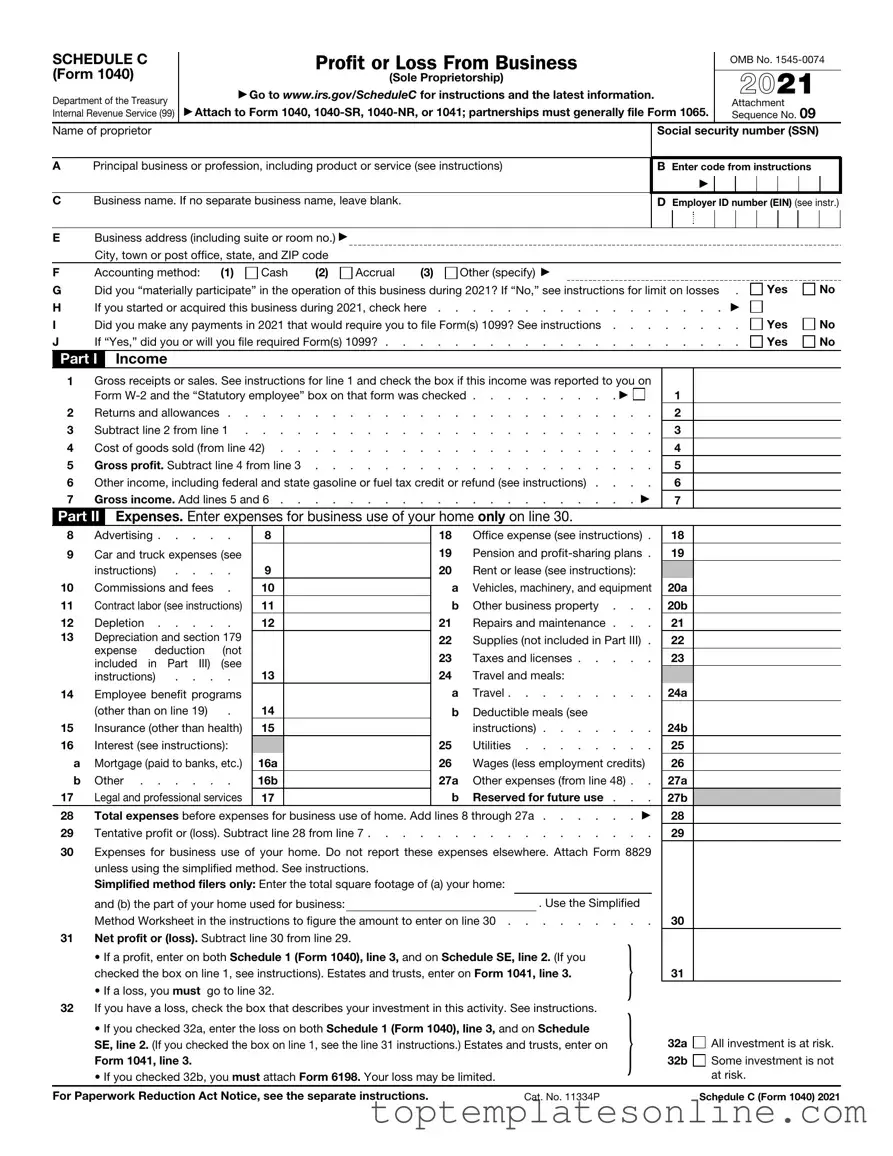Fillable IRS Schedule C 1040 Form
The IRS Schedule C 1040 form is a critical document used by sole proprietors to report income and expenses from their business activities. This form provides a detailed account of your business's financial performance, allowing you to calculate your net profit or loss. Understanding how to accurately complete Schedule C is essential for ensuring compliance with tax regulations and maximizing potential deductions.
Customize IRS Schedule C 1040 Here
